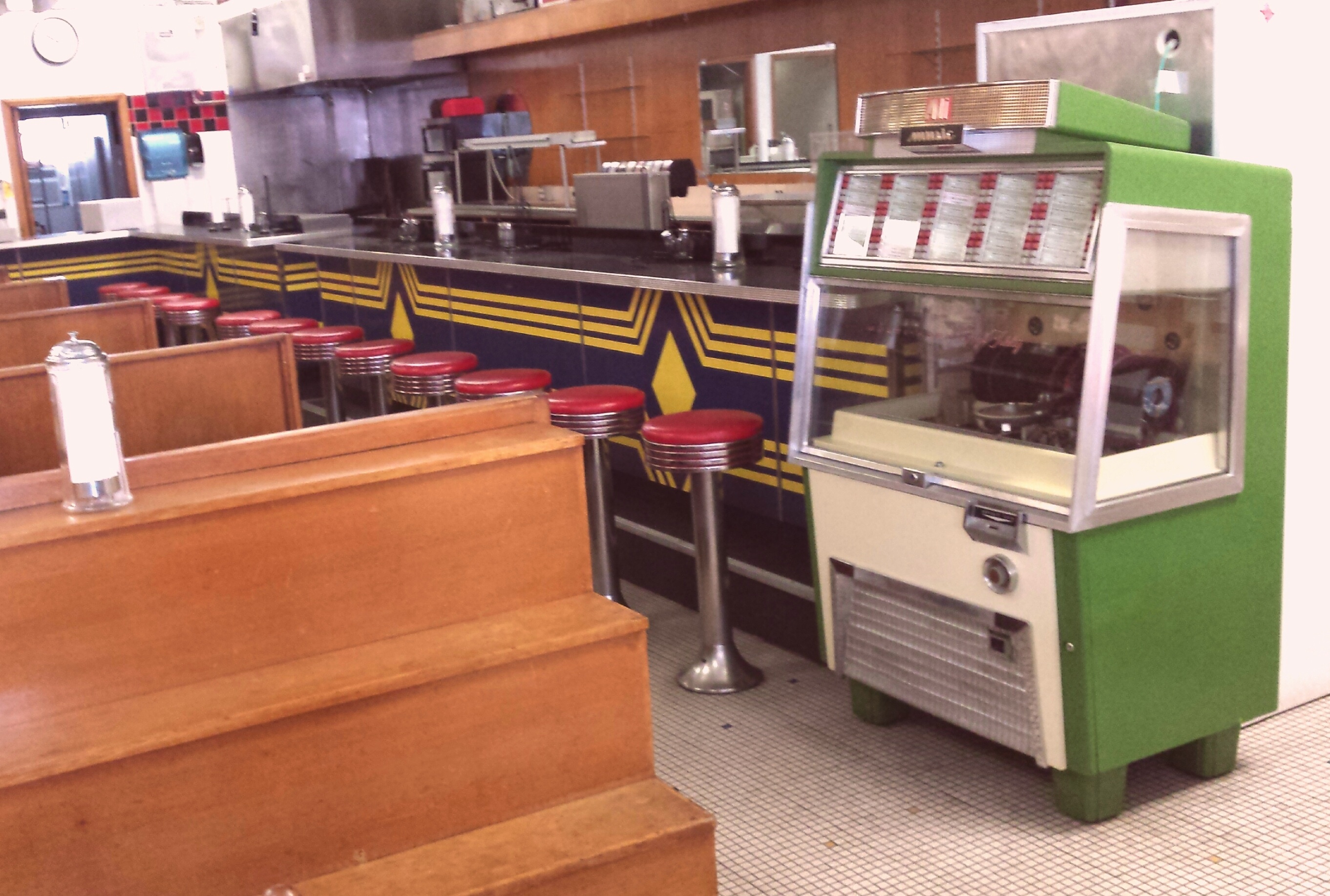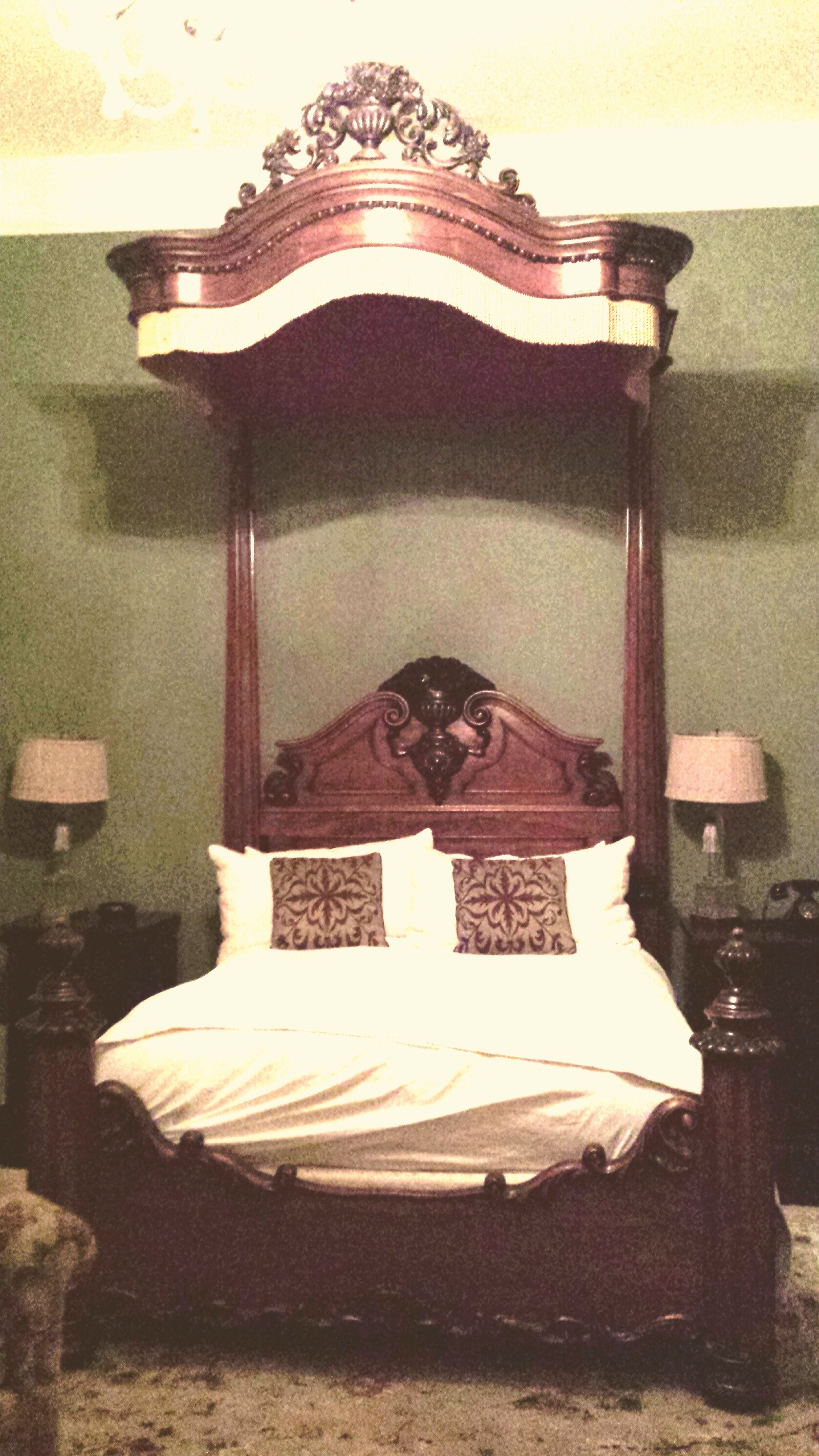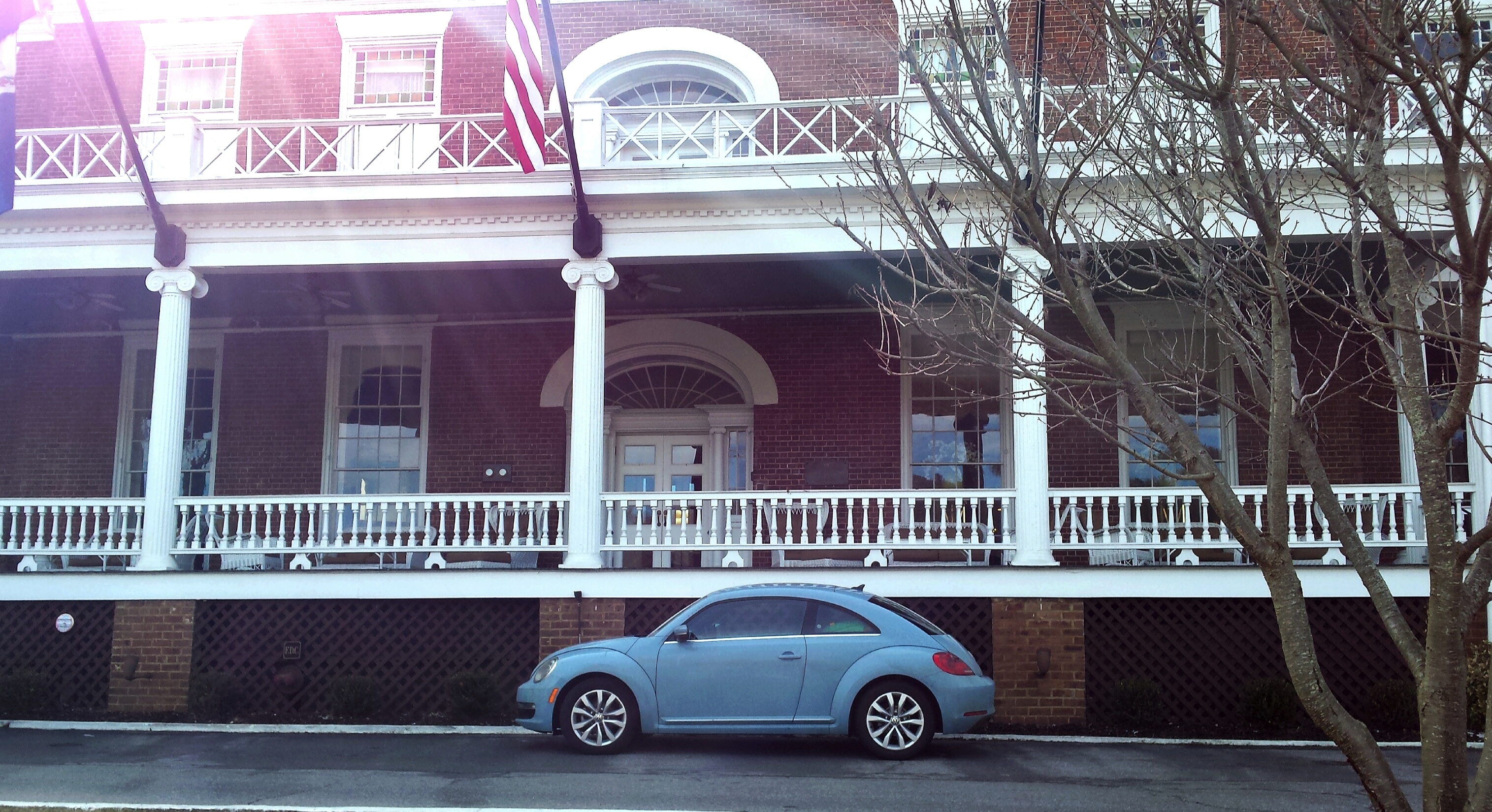The Martha
In the eighteenth century, my German ancestors sailed across the Atlantic and settled in Virginia’s Shenandoah Valley. Both my parents were raised there in small towns nestled in the Blue Ridge Mountains.
Although they moved to Northern Virginia after the war, Mom and Dad always called the Blue Ridge home. They bought a cabin in the Jefferson National Forest for our summer vacations, just yards from the Appalachian Trail. The cabin was built during prohibition, and the walls were papered with pictures of old movie stars. Beside a wind-up Victrola was a pile of 78 r.p.m. records of old crooners, their voices scratchy under the rusting needle. Mountain breezes wafted through the screened porch wrapping around two sides of the cabin, and Jennings Creek roared over a waterfall below the house. The swimming hole was abundant with trout and snakes, and the bushes held nests of ticks, but we loved the place then and our family still loves it today.
Dad had eleven siblings,which gave me plenty of cousins to play with on our vacations. When my cousin Kay heard that we were Bug traveling through Virginia, she insisted that we stop at her house in Roanoke for a visit.
On the way, we got off Interstate 81 to take old Route 11, the thoroughfare for soldiers during the Civil War. The road crosses a bridge over the James River where a sign marks the town of Buchanan as “The Gateway to the Shenandoah Valley.” Confederate soldiers burned the original wooden bridge to prevent the Union Army from access to southern property, but a new bridge has since been built.
Buchanan once thrived with tobacco factories, and the churches were centers of spiritual and social life. My grandfather owned a fe ed store in town, and I have old photos of Dad as a barefoot boy wearing knickers on the sidewalk. There wasn’t much to entertain a kid then except maybe to push a broom or carry packages for his father. When Dad was old enough to enlist, the Navy was his escape.
ed store in town, and I have old photos of Dad as a barefoot boy wearing knickers on the sidewalk. There wasn’t much to entertain a kid then except maybe to push a broom or carry packages for his father. When Dad was old enough to enlist, the Navy was his escape.
As we rolled onto Main Street, I asked Harry to pull the Bug to the curb by Ransone’s Drugstore. Decades ago I sat at the soda fountain and drank Dr. Pepper or sometimes a strawberry milkshake so thick the berries got stuck in the straw. The hot dogs were the best I’ve ever had. Once when Mom had forgotten to bring some medicine with her, Mr. Ransone gave her pills without a prescription and asked her not to say anything about it. I don’t think he charged her a penny.
The day we stopped, Ransone’s looked exactly as it did so many years ago. The soda fountain with its speckled black countertop still has the navy blue front emblazoned with a gold geometric pattern. My bare legs used to stick to the plastic seats of the swiveling chrome stools, and I held onto the counter for balance.
Whereas it used to be a nickel, now it costs a quarter to play rock ‘n’ roll songs on the jukebox holding a row of 45 r.p.m. records. I remember Elvis chanting about his blue suede shoes and Bill Hayley’s Comets rocking around the clock. The tunes were considered “oldies” even then. The milkshake machine sits behind the counter and though I yearned for a shake, the café was roped off that day. The owner had gotten old and had given up the business. Someone was preparing to turn the soda fountain into a Mexican restaurant. My heart broke to think of it.
Rows of shelves divide the soda fountain from the pharmacy and hold everything you’d expect to see in a drug store. The pharmacist is a fellow with long gray hair pulled into a ponytail. There was no one else in the store when we were there, and he was chatty, mostly complaining about the high rent on the place.
The stop at Ransone’s made us late getting to Kay’s, and the cousins had been waiting for us. Her house sits high on a hill with a wall of windows that allows a panoramic view of the Blue Ridge. It was early March and the trees were not quite ready to bud, but the mountains rising up to the clear sky were enough to take my breath away.
Kay had invited her brother David and another cousin, Richard Ballengee. Dickie, as we used to call him, had made the family proud by becoming a junior high school principal, city councilman, and later mayor of Christiansburg.
When we arrived, there were hugs all around. Kay was still as pretty as I remembered her. David stood back shyly. Dick and his wife Joanne beamed with southern friendliness.
I looked at Harry. “These are my people,” I said. For nearly three decades I had struggled to be accepted into his family of upper class Yankees, but I always felt like an outsider. Here, at last, I was at home.
Kay had decorated the table with strings of colored beads and paper shamrocks since we were between Mardi Gras and St. Patrick’s Day. She had a delicious buffet set up in her large kitchen and served iced tea. As we ate, Dick spoke about his father, a telephone lineman who drank a lot. A few times when he was young Dick went with his dad to a moonshiner’s house to make a purchase. From the way Uncle Charlie drank, I suspect it was more than a few times. We talked about childhood when our families were together and caught up on our current lives.
David asked where we were off to next.
“Nashville,” I said. “Or Memphis if we can get that far.”
“You ought to stop in Abingdon,” he said. “Take a look at The Martha.” He explained that The Martha is a grand old hotel and spa named for Martha Washington. He and his wife had stayed there once to celebrate their anniversary. Abingdon is in the far southwest corner of Virginia, and it was on our way. We said we’d have a look.
After lunch, we promised to stay in touch and hugged in the driveway. As we pulled away, my cousins waved until we were out of sight.
It was near dark when we pulled into Abingdon’s narrow main street lined with century-old buildings, including the historic Barter Playhouse where during the Depression people could pay for a ticket with produce from their farms. The Martha anchors the street. It’s a mammoth plantation built of red brick that sits back from the road with a long horseshoe driveway. Spotlights illuminate the fountain spouting in the front yard.
“It’s lovely,” I said to Harry, “but I’m sure we can’t afford to stay here.”
He ignored me, as he often does when he has his mind set. He turned the Bug into the driveway and found the parking area. We had barely begun our cross-country trip and I was afraid our budget would be spent too quickly. But The Martha—oh, how could we resist?
Harry slung my overnight bag over his shoulder.
“Come on,” he said.
When Harry was young, his family spent summers in a stone mansion on the ocean. They played tennis and took ski vacations. All the boys had blue blazers before they were teenagers and went to boarding school when they were thirteen. They were not arrogant about their privilege—they simply knew no different. Mine, on the other hand, was a frugal brand of family. The Blue Ridge cabin had an ill functioning toilet, or one could hike a short way up the mountain to a spidery outhouse. Our running water was siphoned from the creek. We either took cold showers or jumped into the cold swimming hole with a bar of soap. I wore hand-me-downs, went to public school and paid my own way to college. But somehow Harry and I manage to meet in the middle, respectful of each other’s backgrounds and cultures.
The Martha guests have included presidents, dignitaries and movie stars. Elizabeth Taylor stayed there, and I believe we were given her room. It had a fifteen-foot ceiling, walls graced with antique paintings, and a mahogany canopy bed. The bathroom sink and floor were white marble. When the mansion was built in 1832, The Martha’s grand lobby served as General Francis Preston’s living room. He had been a hero in the War of 1812 and deserved no less than luxury.
Before the Civil War, the mansion was sold and became The Martha Washington College for Women. During the war, wounded soldiers were brought to the college, and female students acted as nurses. Understandably, many of the soldiers fell in love with the young women.
In spite of the ministrations of the college girls, dozens of their patients died. With their deaths, it’s not surprising that The Martha is haunted by ghosts. One student, a girl named Beth, fell in love with a gravely wounded Yankee captain. As he died, she played her violin for him. Just weeks later, Beth succumbed to typhoid fever. Some guests claim to hear her violin music in the halls at night.
Stories abound about soldier ghosts trailing in mud from the battlefields, spots of blood mysteriously appearing on the carpeting and as quickly vanishing, moans and cries of “My pain, my pain!” echoing through the hallways. But we heard and saw nothing the night we stayed at The Martha—not even a glimpse of the horse that supposedly wanders the grounds waiting for his wounded rider.
After swimming a few laps in The Martha’s Olympic-size salt-water pool and having a bite to eat in the dining room, we retired to our canopy bed. That night in the bosom of my beloved Shenandoah Valley, unbothered by ghosts or their music, Harry and I slept like angels.

Love this. Thank you for writing and posting it.
Thanks for posting a comment. I highly recommend The Martha if you’re ever in SW VA.